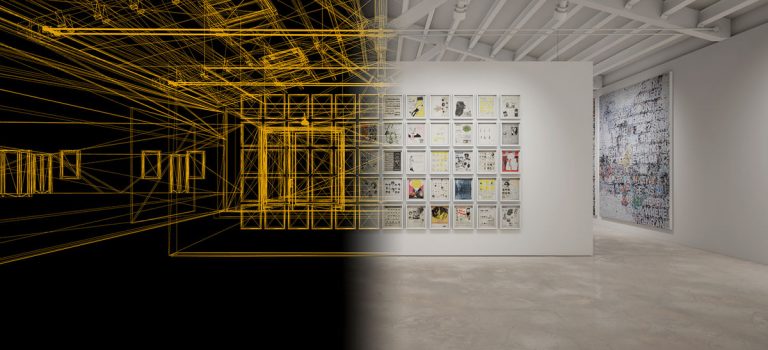Source: Artsy.
In the months since COVID-19 shut down most traditional in-person avenues for viewing and purchasing art, virtual reality (VR) has become increasingly prevalent as a tool for conducting business. The transition to virtual space has required art-world players to adapt to the challenges—and possibilities—that come with operating in a medium that is in many ways still largely unexplored.
“It’s a technology that’s still in its infancy,” said Oliver Miro, the founder of VR art app Vortic. “People are beginning to know what the terms VR, XR, and AR mean, but as we’re developing it, we’re still trying to figure out so many things: What are the best use cases? Where are we going with it? How can we really work with our artists and this technology in the best possible way?”
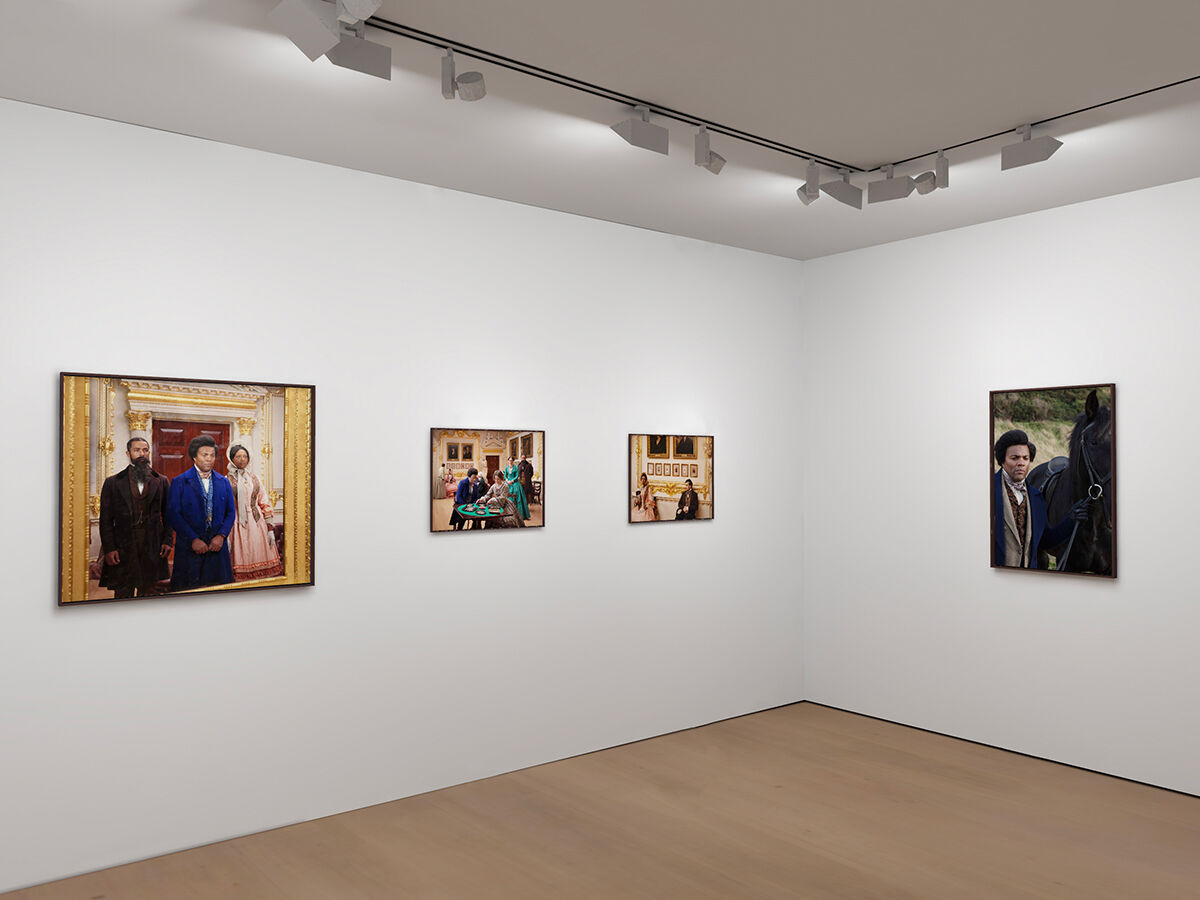
XR installation view of works by Isaac Julien from “Lessons of the Hour – Frederick Douglass” at Victoria Miro on Vortic, 2020. © Isaac Julien. Courtesy of the artist, Victoria Miro, and Metro Pictures.
Miro launched Vortic in May in order to provide collectors and gallerists with a platform that allowed for a more holistic interaction with both the work and with each other. The app features VR-, AR-, and XR-enabled exhibitions from dealers such as Victoria Miro (Oliver Miro is Victoria’s son), Pippy Houldsworth, and David Zwirner, where collectors can browse virtual representations of physical works that have been composited into digital space from hundreds of high-resolution photographs, allowing for more complete views of the work in question. Miro points to this compositing as a key element in recreating the experience of in-person viewing, an experience that many standard online viewing rooms lack.
“One of our major strengths is 3D presentations—being able to walk around a sculpture,” Miro said. “They’re presented in such depth and detail, and one of our strengths, especially in lockdown, is being able to access these scans of these works.”
Installation view of “Beside Itself,” created in HWVR, picturing Charles Gaines’s Librettos: Manuel de Falla/Stokely Carmichael, Set 5, 2015, and Mark Bradford’s New York City, 2019, and Chicago, 2019. © the artists. Courtesy of the artists and Hauser & Wirth.
Iwan Wirth, the co-founder and co-president of Hauser & Wirth—which launched its own VR platform, HWVR, earlier this year in conjunction with the gallery’s in-house tech and research branch ArtLab—similarly emphasized the importance of accurately recreated digital works. “You are creating a digital facsimile of something with enormous emotional significance to the artist and audience,” he said. “Every detail—texture, lighting, framing—has to be meticulously thought through in advance of rendering.” For its inaugural HWVR presentation, Hauser & Wirth installed the group exhibition “Beside Itself” in a virtual facsimile of its future gallery space on the Mediterranean island of Menorca. Visitors can even step “outside” to see a large Louise Bourgeois spider sculpture installed nearby.
For galleries offering works for sale in VR, the advantage of minimized physical expenses like construction, insurance, freight, and travel is counterbalanced by the inherently solitary nature of virtual viewing, where the distance between buyer and seller may be harder to bridge. In order to shorten that digital distance, dealers can not only ensure accurate renderings of works, but also strive to approximate the accompanying ambiance of seeing those works in relation to their surroundings.

Installation view of “David Smith. Sprays,” created in HWVR picturing David Smith’s Quixote Don, 1958-1959, White Egg with Pink, 1958, Untitled, 1962, and Untitled, 1959. © 2020 The Estate of David Smith / Licensed by VAGA at Artists Rights Society (ARS), NY. Courtesy of the Estate and Hauser & Wirth.
A sense of spatial verisimilitude is essential to creating an enticing virtual viewing experience, according to art advisor Laura Smith Sweeney, who said that “mimicking the feel of seeing artwork on the wall from different perspectives” helps increase a collector’s comfort in buying digitally.
Wirth concurred, stating that visitors have responded most strongly to “the opportunity to view work ‘in situ,’” and that due to the saturation of online shows during lockdown, collectors are eager for a format “that takes them beyond jpegs on a screen.”
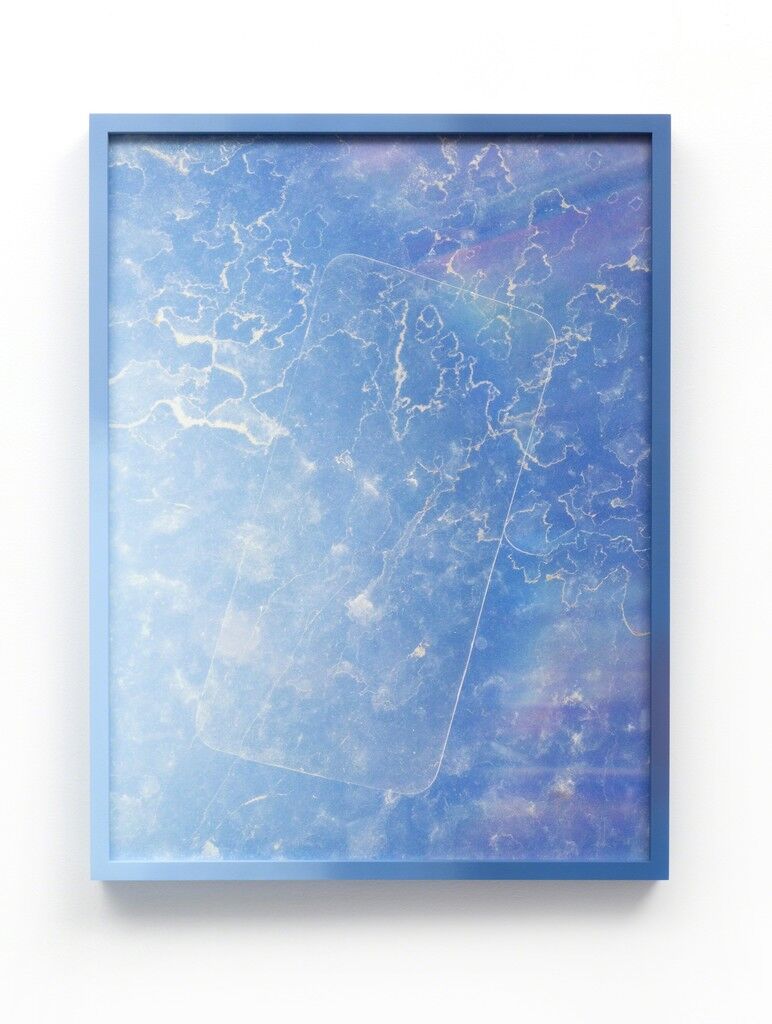
Valerie Green IMG 2053_7/12/13, 4:04:30 PM, 2014 Moskowitz Bayse

Alex Anderson, Stains on a Pretty Landscape III, 2020. Courtesy of Gavlak.
But recreating in-person experiences is no easy task. Jeff Lawson, founder of the fair Untitled, Art—which typically takes place in Miami Beach and San Francisco in December and January, respectively—has spent months collaborating with digital art platform ArtLand to develop the fair’s first VR iteration: Untitled, Art Online. The virtual fair opens to VIPs on Thursday and the wider public on Friday, running through Sunday. Lawson described the fair’s creation process as a form of meticulous and often finicky architecture.
“The logistics of defining, creating, and developing an art fair in virtual reality is everything that it would take to build a real fair, times 100,” Lawson said. “It’s substantially more difficult. You’re building the structure the same way you’d build something in real life—layer upon layer. If you build a layer wrong, you have to go back and rip it out.”
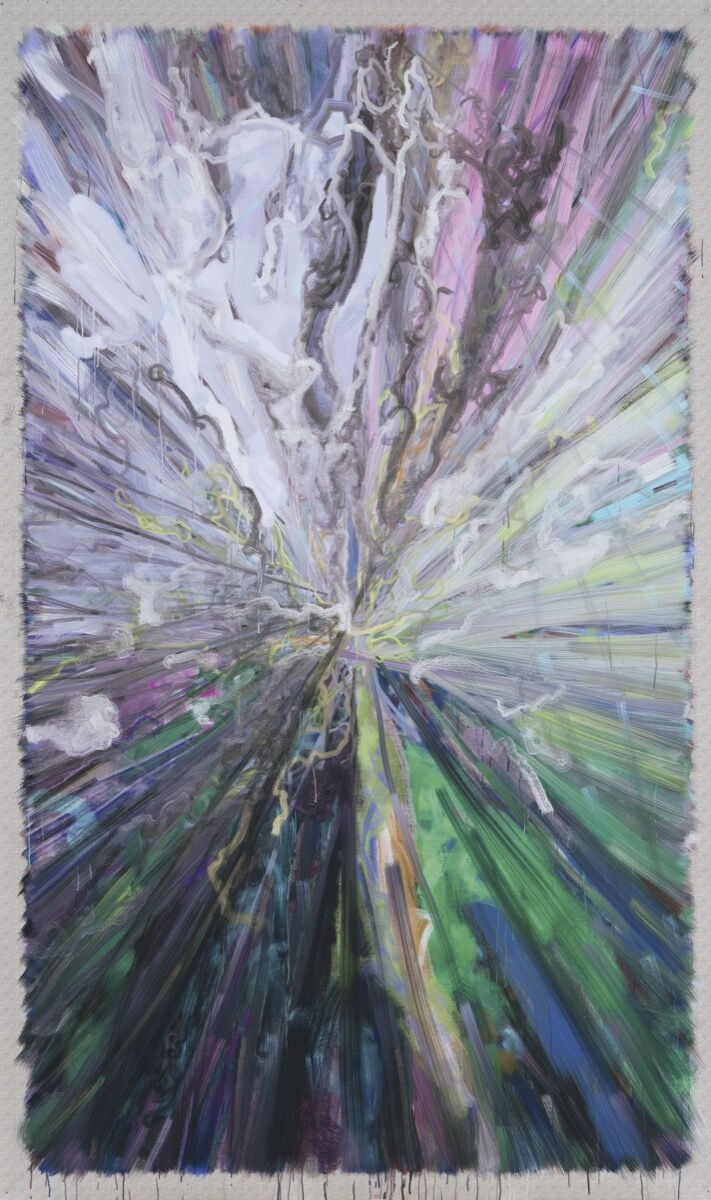
Siebren Versteeg, A Rose, 2017. Courtesy of bitforms gallery.
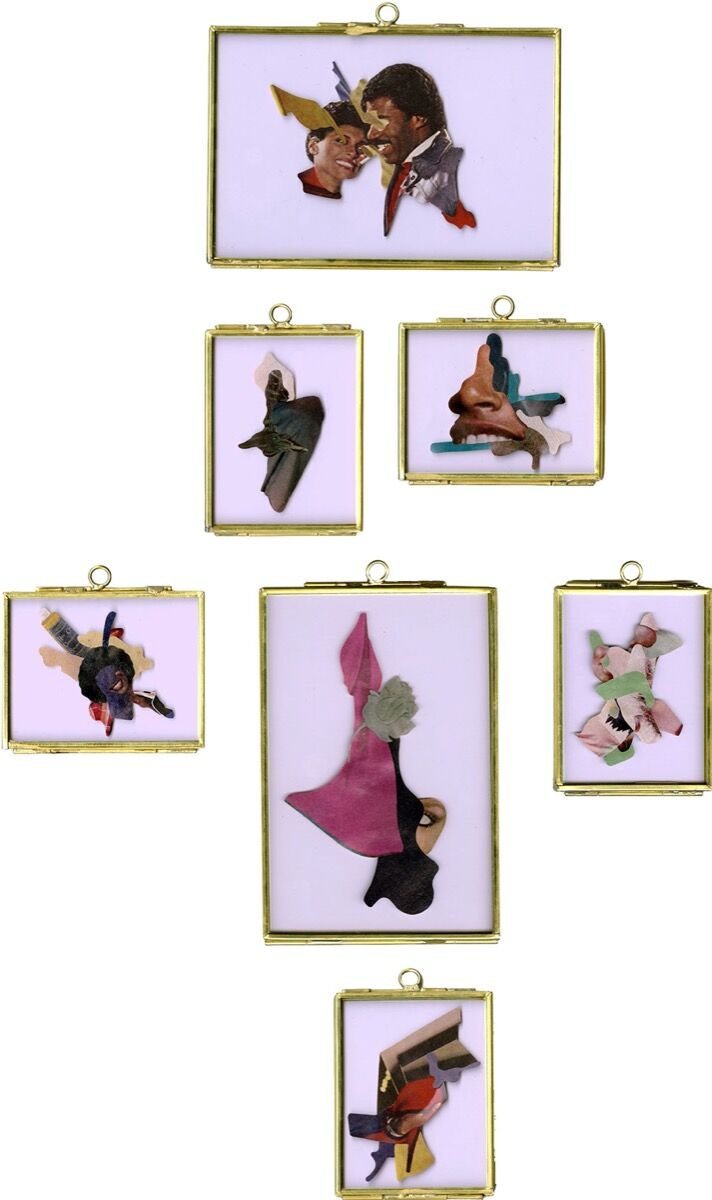
Dana Robinson, Jewels of Cheering for the Home Team ALL, 2020. Courtesy of Salenas Mountain.
For Untitled’s first VR fair, Lawson wanted to hew closely to a regular in-person fair experience, meaning those virtually built layers would ideally add up not only to enticing booth presentations, but an enjoyable approximation of walking between booths in an airy tent and viewing a variety of works in succession. To that end, Lawson wanted the Untitled, Art Online space to be easily navigable, albeit with the option for a variety of paths through the space.
“We wanted to keep it simple—we kept it at 40 galleries, and the floorplan itself is very straightforward,” Lawson said. “But we designed it in such a way where there are several ways for you to move throughout the space. We have a dollhouse configuration, where you can look down on the fair and manipulate the floor so that you zoom directly into a booth. You can actually walk through the space and discover the same way you would in a traditional art fair. You can move through the space by artists and by gallery.”

Installation view of works by Tsedaye Makonnen. Photo by Dawn Whitmore. Courtesy of Addis Fine Art.
Booths by participating galleries such as New York’s bitforms and London- and Addis Ababa–based gallery Addis Fine Art show off the fair’s 3D composite capabilities, displaying sculptures and floor works by Auriea Harvey and Tsedaye Makonnen, respectively. Starting Thursday, virtual fairgoers will be able to move among and around fully rendered facsimiles of their work.
Sweeney, who previewed Untitled’s VR offering, said the fair’s approximation of in-person art viewing is just as important as the participating galleries’ individual presentations.
“As you are ‘walking’ through the rows of gallery booths, you can view works from a distance or as you turn the corner—there is that all-important sense of scale, how the work lives in a three-dimensional space,” Sweeney said. “This new technology helps the collector envision the piece in their own space.”

M. Angelou, 2020 TAFETA

Nathan Catlan, The Bird Feeders, 2018. Courtesy of Davidson Gallery.
At the same time, though, dealers have to ensure they aren’t leaving collectors totally unattended. Sweeney said that in virtual environments, buyers are more likely to move slowly when considering purchases, tempering their passion with the distance the internet affords. In order to keep collectors engaged, Sweeney suggested gallerists keep their presentations concise, with a limited number of works available, all of which should be accompanied by accessible details, including provenance, measurements, explanatory text, pricing, and contact information.
“This is not a stand-alone experience,” Wirth said of the expanded capabilities of virtual exhibitions. “We complement it with incredible film material and archive material or firsthand images of the artist in their studio. All of these elements help to tell the story of an artist and bring the online exhibition to life.”
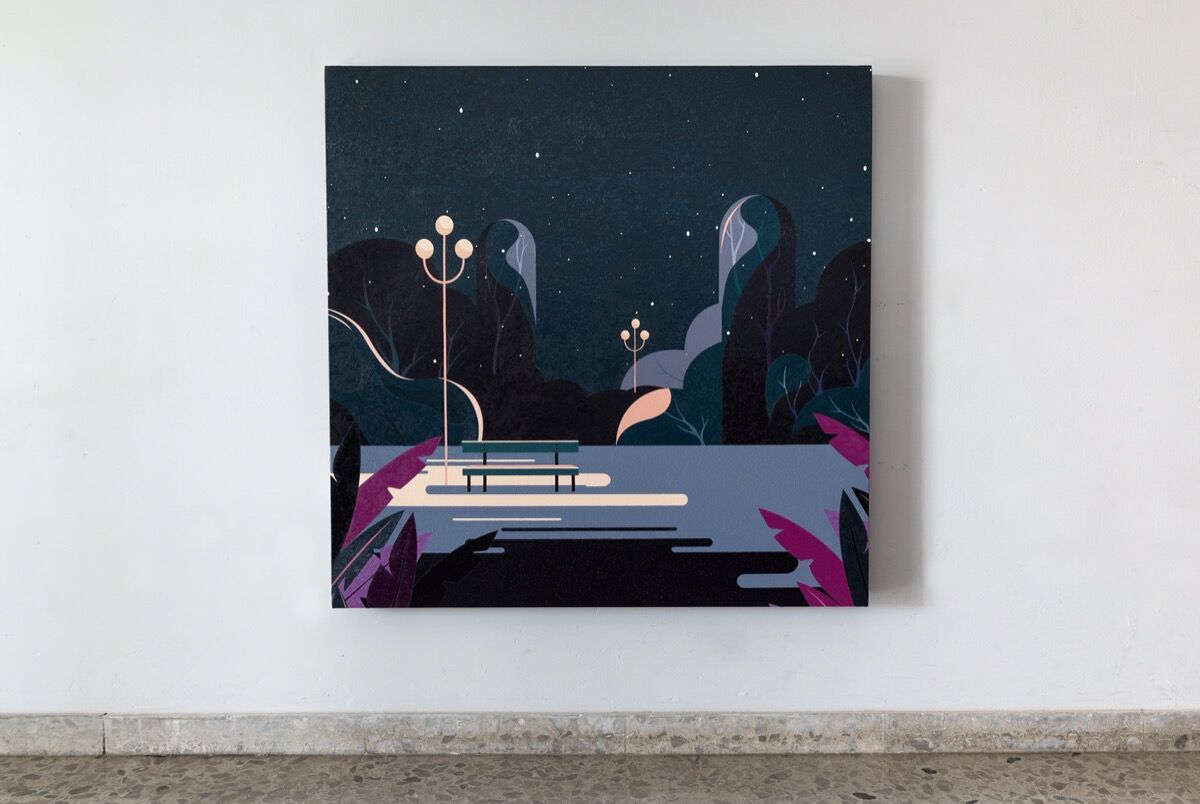
Eduardo Ponjuan, En la noche, 2020. Courtesy of El Apartamento.
One of the biggest tensions in selling art in VR, ultimately, is between simulating reality and utilizing the more mutable potential of digital space. For fairs and galleries alike, creating an intuitive and immersive experience right now means largely reproducing reality, albeit with slight enhancements. And while evidence seems to point toward collectors finding comfort in approximations of in-person experiences, the full potential that a virtual space presents has not yet been explored.
“The potential of HWVR is limitless,” Wirth said. “We’re only just beginning to explore the potential applications.”
Justin Kamp is an Editorial Intern at Artsy.








